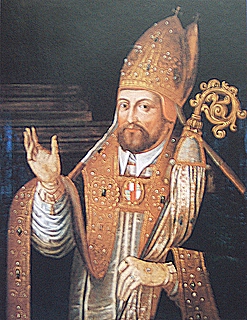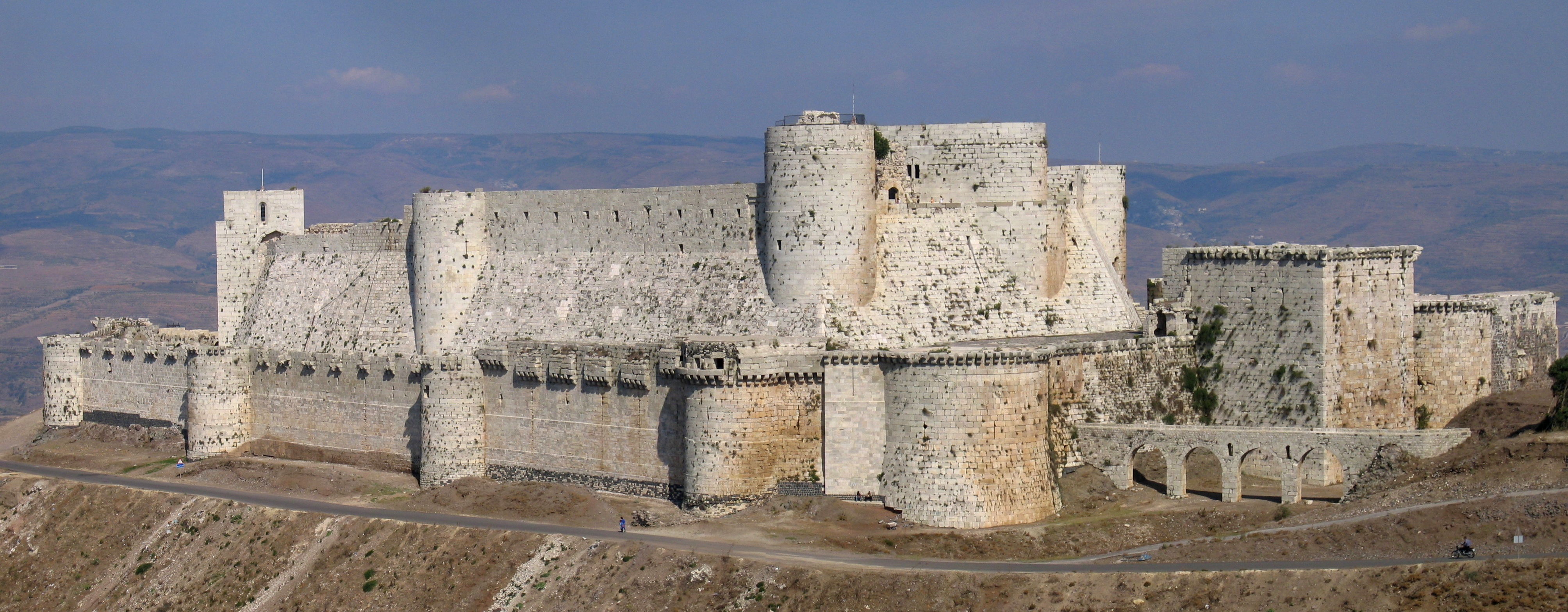|
Renier Of St Laurent
Renier of St Laurent (died 1188) was a twelfth-century Benedictine monk of St Laurent Abbey, Liège. He is known as a writer of theological and exegetical works, controversial and historical works, and numerous biographical and hagiographical works. Works by him are in ''Patrologia Latina'' and ''Monumenta Germaniae Historica''. The ''Triumphale Bulonicum'' is a chronicle and commemorates the siege of Bouillon Castle by Albero, prince-bishop of Liège, 17 August to 22 September 1141. It is based on eye-witness accounts.http://perso.infonie.be/liege06/06six.htm , in French. References *Hubert Silvestre, ''Notes sur la "Vita Evracli" de Renier de Saint-Laurent. Contribution à l'histoire littéraire du XIIe siècle Liégeois'', ''Revue d'histoire ecclésiastique ''Revue d'histoire ecclésiastique'' is a peer review, peer-reviewed academic journal in the field of ecclesiastical history. Independent third-party sources have described it as "The best international church-historical jo ... [...More Info...] [...Related Items...] OR: [Wikipedia] [Google] [Baidu] |
Benedictine
The Benedictines, officially the Order of Saint Benedict (, abbreviated as O.S.B. or OSB), are a mainly contemplative monastic order of the Catholic Church for men and for women who follow the Rule of Saint Benedict. Initiated in 529, they are the oldest of all the religious orders in the Latin Church. The male religious are also sometimes called the Black Monks, especially in English speaking countries, after the colour of their habits, although some, like the Olivetans, wear white. They were founded by Benedict of Nursia, a 6th-century Italian monk who laid the foundations of Benedictine monasticism through the formulation of his Rule. Benedict's sister, Scholastica, possibly his twin, also became a religious from an early age, but chose to live as a hermit. They retained a close relationship until her death. Despite being called an order, the Benedictines do not operate under a single hierarchy. They are instead organized as a collection of autonomous monasteries ... [...More Info...] [...Related Items...] OR: [Wikipedia] [Google] [Baidu] |
Liège
Liège ( ; ; ; ; ) is a City status in Belgium, city and Municipalities in Belgium, municipality of Wallonia, and the capital of the Liège Province, province of Liège, Belgium. The city is situated in the valley of the Meuse, in the east of Belgium, not far from borders with the Netherlands (Maastricht is about to the north) and with Germany (Aachen is about north-east). In Liège, the Meuse meets the river Ourthe. The city is part of the ''sillon industriel'', the former industrial backbone of Wallonia. It still is the principal economic and cultural centre of the region. The municipality consists of the following Deelgemeente, sub-municipalities: Angleur, Bressoux, Chênée, Glain, Grivegnée, Jupille-sur-Meuse, Liège proper, Rocourt, Liège, Rocourt, and Wandre. In November 2012, Liège had 198,280 inhabitants. The metropolitan area, including the outer commuter zone, covers an area of 1,879 km2 (725 sq mi) and had a total population of 749,110 on 1 January 2008. ... [...More Info...] [...Related Items...] OR: [Wikipedia] [Google] [Baidu] |
Miri Rubin
Miri Rubin (; born 1956) is a historian and professor of medieval and early modern history at Queen Mary University of London. She was educated at the Hebrew University of Jerusalem and the University of Cambridge, where she gained her doctorate and was later awarded a research fellowship and a post-doctoral research fellowship at Girton College. Between 1989 and 2000 she held a tutorial fellowship at Pembroke College, Oxford and a university lectureship, then readership, in the Faculty of History. Rubin studies the social and religious history of Europe between 1100 and 1500, concentrating on the interactions between public rituals, power, and community life. In 2012 she gave a Turku Agora Lecture. In 2017 she gave the Wiles Lectures at Queen's University Belfast. In 2024, she delivered the Gifford Lectures on ''The Feminine and the Religious Imagination'' at the University of Aberdeen. Her books have been well received in newspapers and academic journals. The ''Guardian'' call ... [...More Info...] [...Related Items...] OR: [Wikipedia] [Google] [Baidu] |
Hagiography
A hagiography (; ) is a biography of a saint or an ecclesiastical leader, as well as, by extension, an adulatory and idealized biography of a preacher, priest, founder, saint, monk, nun or icon in any of the world's religions. Early Christian hagiographies might consist of a biography or ' (from Latin ''vita'', life, which begins the title of most medieval biographies), a description of the saint's deeds or miracles, an account of the saint's martyrdom (called a ), or be a combination of these. Christian hagiographies focus on the lives, and notably the miracles, ascribed to men and women canonized by the Roman Catholic church, the Eastern Orthodox Church, the Oriental Orthodox churches, and the Church of the East. Other religious traditions such as Buddhism, Hinduism, Taoism, Islam, Sikhism and Jainism also create and maintain hagiographical texts (such as the Sikh Janamsakhis) concerning saints, gurus and other individuals believed to be imbued with sacred power. However ... [...More Info...] [...Related Items...] OR: [Wikipedia] [Google] [Baidu] |
Patrologia Latina
The ''Patrologia Latina'' (Latin for ''The Latin Patrology'') is an enormous collection of the writings of the Church Fathers and other ecclesiastical writers published by Jacques Paul Migne between 1841 and 1855, with indices published between 1862 and 1865. It is also known as the Latin series as it formed one half of Migne's ''Patrologiae Cursus Completus'', the other part being the '' Patrologia Graeca'' of patristic and medieval Greek works with their (sometimes non-matching) medieval Latin translations. Although consisting of reprints of old editions, which often contain mistakes and do not comply with modern standards of scholarship, the series, due to its availability (it is present in many academic libraries) and the fact that it incorporates many texts of which no modern critical edition is available, is still widely used by scholars of the Middle Ages and is in this respect comparable to the ''Monumenta Germaniae Historica''. The ''Patrologia Latina'' includes Lat ... [...More Info...] [...Related Items...] OR: [Wikipedia] [Google] [Baidu] |
Monumenta Germaniae Historica
The (Latin for "Historical Monuments of Germany"), frequently abbreviated MGH, is a comprehensive series of carefully edited and published primary sources, both chronicle and archival, for the study of parts of Northwestern, Central and Southern European history from the end of the Roman Empire to 1500. Despite the name, the series covers important sources for the history of many countries besides Germany, since the Society for the Publication of Sources on Germanic Affairs of the Middle Ages has included documents from many other areas subjected to the influence of Germanic tribes or rulers (Britain, Czech lands, Poland, Austria, France, Low Countries, Italy, Spain, etc.). History The MGH was founded in Hanover as a private text publication society by the Prussian reformer Heinrich Friedrich Karl Freiherr vom Stein in 1819. The first volume appeared in 1826. The editor from 1826 until 1874 was Georg Heinrich Pertz (1795–1876), who was succeeded by Georg Waitz (1813–18 ... [...More Info...] [...Related Items...] OR: [Wikipedia] [Google] [Baidu] |
Bouillon Castle
Bouillon Castle (, ) is a medieval castle located in Wallonia in the town of Bouillon in the province of Luxembourg, Belgium. Although it was mentioned first in 988, At ''castles.org''. there had been a castle on the same site for a much longer time. The castle is situated on a rocky spur of land within a sharp bend of the Semois River. In 1082, Bouillon Castle was inherited by , who sold it to Otbert, Bishop of Liège in order to finance the |
Albero II Of Chiny-Namur (c. 1080 – 1152), Roman Catholic archbishop
{{given name, type=both ...
Albero is both a surname and a given name. Notable people with the name include: *Maria Pilar Izquierdo Albero (1906–1945), Spanish nun *Vicente Albero (born 1944), Spanish politician and economist *Albero I of Louvain (1070–1128), Roman Catholic bishop *Albero de Montreuil Albero de Montreuil () ( – 18 January 1152) was Archbishop of Trier from 1132 to 1152 and is the subject of the . Albero was born near Toul in Lorraine, a scion of the petty noble house of Thicourt-Montreuil; his parents were Gerard of Thico ... [...More Info...] [...Related Items...] OR: [Wikipedia] [Google] [Baidu] |
Prince-bishop Of Liège
A prince-bishop is a bishop who is also the civil ruler of some secular principality and sovereignty, as opposed to '' Prince of the Church'' itself, a title associated with cardinals. Since 1951, the sole extant prince-bishop has been the Bishop of Urgell, Catalonia, who has remained ''ex officio'' one of two co-princes of Andorra, along with the French president. Overview In the West, with the decline of imperial power from the 4th century onwards in the face of the barbarian invasions, sometimes Christian bishops of cities took the place of the Roman commander, made secular decisions for the city and led their own troops when necessary. Later relations between a prince-bishop and the burghers were invariably not cordial. As cities demanded charters from emperors, kings, or their prince-bishops and declared themselves independent of the secular territorial magnates, friction intensified between burghers and bishops. The principality or prince-bishopric (Hochstift) ru ... [...More Info...] [...Related Items...] OR: [Wikipedia] [Google] [Baidu] |
Revue D'histoire Ecclésiastique
''Revue d'histoire ecclésiastique'' is a peer review, peer-reviewed academic journal in the field of ecclesiastical history. Independent third-party sources have described it as "The best international church-historical journal".James E. Bradley and Richard Alfred Muller, ''Church History: An Introduction to Research, Reference Works, and Methods'' (Grand Rapids: Eerdmans, 1995)p. 90 It was established in 1900 at the Catholic University of Leuven (1834–1968), Catholic University of Louvain by Alfred Cauchie. Publication was suspended during the First World War, resuming again only in 1921. Since 1970, it is jointly published by the Université catholique de Louvain, University of Louvain (UCLouvain, in Louvain-la-Neuve) and KU Leuven. References Historiography of Christianity Multilingual journals Publications established in 1900 Quarterly journals Religion history journals {{reli-hist-journal-stub ... [...More Info...] [...Related Items...] OR: [Wikipedia] [Google] [Baidu] |
1188 Deaths
Year 1188 ( MCLXXXVIII) was a leap year starting on Friday of the Julian calendar. Events By place Europe * January 22 – King Ferdinand II dies after returning from a pilgrimage to Santiago de Compostela. He is succeeded by his 16-year-old son Alfonso IX, who becomes ruler of León and Galicia. He convenes representatives of the nobility, clergy and towns at the Basilica of San Isidoro the Cortes of León. These Corteses are considered to be the first parliament in Europe. * Spring – King Henry II and Philip II (Augustus) meet at Le Mans, with Archbishop Josias (or Joscius) in attendance. Both kings agree to peace terms, and to contribute to a joint Crusade. It is decided to raise a new tax to pay for the expedition. This tax, known as the Saladin Tithe, is imposed on the people of England and France to raise funds for the Third Crusade. * March 27 – Emperor Frederick I (Barbarossa) holds a Diet at Mainz and takes the Cross, followed by hi ... [...More Info...] [...Related Items...] OR: [Wikipedia] [Google] [Baidu] |







